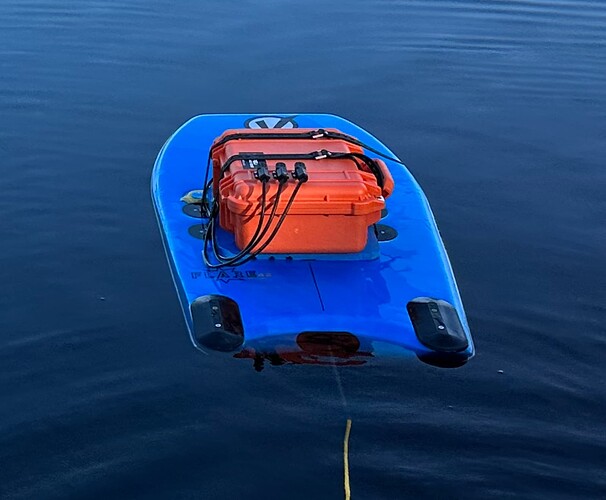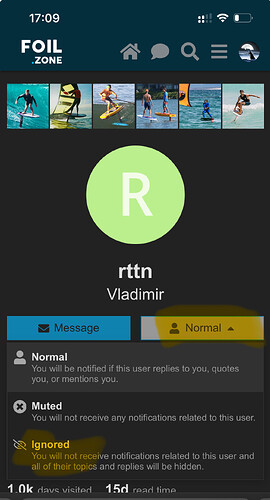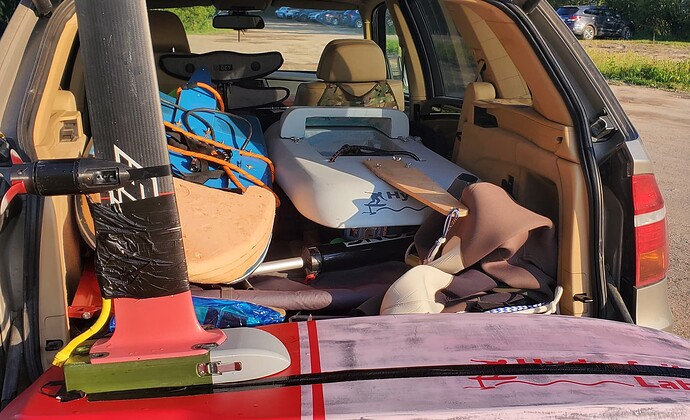As i said, ive nothing to prove to you mate. Im not interested in you or your opinions from this point forward. You also need to work on your communication skills…you are " seriously" lacking.
K
I consider further communication pointless - bye-bye.
Brilliant, now he’s gone… maybe we can all get back on topic… ![]()
I’ve built a tow boogie based on the 65161 motor and a bodyboard. It works great and after some initial adjustment of the position of the battery case and the addition of rear fins it steers great. The torque issue is not a problem either. This is really not a difficult build to get right if you just read some of the tow boogie threads here. A friend of mine built one as well and he also has got none of the issues @rttn is harping about. I think the biggest issue people run into is choosing a bodyboard that is to small and mounting the motor to far aft. I even got a YouTube clip of mine in my build thread.
With that being said I hope this thread will be about fixing the inherent issues with the simple bodyboard builds and not trying to fix a problem solved long ago. Contrary to what @rttn keeps talking about it’s not about steering or torque but handling in chop and waves. The basic bodyboard builds also always veers off as soon as you let go of the rope. My next build is currently on the drawing board but will have dual motors for steering and a deeper v-formed hull. I’m planning on using the imu that’s already present in the bremote as a very simple autopilot.
I’m going for dual motors instead of a steerable single motor since it will remove the torque issue and allow for a much narrower hull. The dual motor is also a simpler mechanical solution and will be easily 3D-printed.
interesting ! i am building my first boogie thanks to the feedback from all of you.
a dual motor in flipsky 6384. the dual seems more suitable than a single motor and many of the designs work well;
i will start on a bodyboard, but i hope later to mount everything on a surfboard, more seaworthy. i hope to share some great videos ![]()
@KONUTZ I see Takuma logo on your controller, where it come from (efoil parts ?), takuma is bankrupt unfortunately…
@Youpi …it is indeed a Takuma controller as it uses all the parts and batteries from a Takuma efoil i couldnt sell…turns out these things are very well suited to the tow boogie concept… get the board right and you should have no major issues i dont beleive… I am also going to experiment with props when i get some time. I recently bought one off Propeller King (@superlefax) and have a Flite prop also to try out.
I like the idea of the dual motor concept but i just used what i had…Good luck with your build ![]()
![]()
K
You say you adjusted the battery position to counteract torque. @KONUTZ says he has a centered battery position and no torque issues. I don’t believe it and explained why. I came to a tech forum to get technical information and I simply asked (not demanded) for a video to prove it. He could have just said no and that would have been the end of it, but I got a tantrum and accusations of aggression.
Another point I just wanted to clarify. okpTow - Jatem's style - #72 by rttn
In this thread I posted a photo of my build on two motors. Has anyone made a dual-motor boogie before?
This is the position of my battery case. As you can see you’ll barely notice that the center of mass is offset to the left. What gives it away is that the board sits a bit deeper on the left side than the right. The tow boogie will work fine even when the center of mass is dead center but it will be harder to start with a smaller board. Maybe @KONUTZ got his battery case in a similar position as mine and never gave it much thought since his tow boogie apparently works fine? He could also be riding on a mid length board and then the torque issue will be much less of a problem.
My friend build a pretty much identical tow boogie to mine but moved the motor pod aft about 10 cm and that increased the torque effect and made it slightly more difficult to start with a small board. Maybe you’ve got a similar issue with the motor pod mounted too far aft?
And as i said…i dont care if you beleive it…what is wrong with you man???..
K
Does anyone know how i can block this rttn guy???.. i cant listen to his sh*t anymore…jaysus.
K
Thank you…i got there on the end. However, if anyone has any questions about how i approached this build please DM…im happy to help.
K
@jenz … ive ridden a 5’2 and a 7’2 behind it…behaves the same way. As ive said, previosuly i am.goung to move the motor back an inch to get the nose up for a bit better trim…mine TB is wide and longer than a foamie… I dont have torque or “righting moment” issues and the width and shape have alot to do with that… my two cents
K
No offense @rttn, i used your profile just as an example of the ignore function, couldn’t do it on my own ![]()
No problem.
Since I don’t have enough characters, I’ll add the following. I asked if I was the first to build a twin-motor boogie, because KONUTZ admitted above that he likes the twin-motor layout. And if I’m the first, he can thank me. After posting the photo, I shared the motor mount files several times and PMed people about the specifics of my build, but I was never thanked publicly. Hopefully I managed to write this before he bans me )))
Yes, it is possible that @KONUTZ did not think about the battery compartment position and reported incorrect information. That is why I asked for a video with a left and right turn, because this way the effect of torque on the board will be expressed most clearly.
I remember your videos of towing. Thanks for buying a GoPro ))). After watching, I realized that active maneuvering with a rope is difficult or impossible with this setup. I do not suffer much from the fact that my first single-motor assemblies were unsuccessful. Here is the trunk of my car today. Both tows handle and maneuver well. The right one also rides well on chop. Both boards never deviate, and go strictly on course when I release the rope, I can even take a video to confirm this, despite the lack of a GoPro )
However, I would go back to a single-motor setup if what @KONUTZ said was true. Only because the assembly is easier.
I do not agree that torque is a long-solved problem. Otherwise, Oscar wouldn’t have mentioned it at all in his review of Zero Tow. For me, the main problem is dolphining at high speeds. I understand the ways to solve it, but I’m not doing it yet, because the thrust doesn’t disappear.
I’m pretty sure I’ve thanked you on by my builds, but if not, thank you. @rttn was the reason I was able to build my dual motor boogies. It was all from his original design. Super helpful with a lot of knowledge.
I think the issue is forums, or really any text based messaging, are very impersonal and the text can be interpreted in so many ways. I think most everyone on here is just helping and asking questions to further the DIY community.
Yea, if you want a single motor tow boogie that handles great in chop I think you’ve got a point that the torque issue is not solved. On flat water on the other hand you simply buy the biggest body board or build something fairly wide and that’s it.
How come you want to move back to a single motor tow boogie? Are you planning on implementing steering in a similar way to the zero tow? For me the dual motor design seems a lot easier since the pods holding the motors can easily be 3d-printed and steering is handled by differential thrust.
I used a bodyboard based boogie for 6 months before prototyping the inflatable version.
What I found that helped:
Get the biggest board you can find
Add a foam rocker/ bow to the front
Put the battery as far forward and to the left as possible with out having it nose dive at low speeds.
Tow point as low as possible, at the water line. Distance behind motor isn’t that critical.
A shallow V to help keep it going straight - a flat bottom board is very skatey at high speeds.
For DIY, steering via two motors is a lot easier.
For a product to sell, a sealed inrunner motor and one prop is a lot more reliable.


